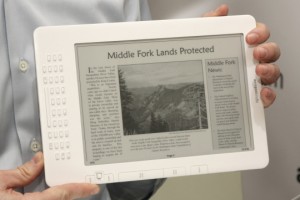Before going into the death of Borders and the changes in the ways we publish and consume written works, it is important to understand how we got here.
It all goes back to 618 where the Chinese — not Gutenberg — invented block printing to reproduce copies of the tipao. The tipao were official newsletters and used to spread news to elite groups within the Chinese Empire. Then…not a whole lot happened for awhile.
It wasn’t until 1450 when Johann Gutenberg famously invented and used his letter press that things would begin to change around the world. Fast forward another 70 years to 1517 when Martin Luther posted his 95 Theses. The press would play a pivotal role in ensuring that his ideas would not die with a simple book-burning or excommunication.
Instead of painstakingly reproducing copies of books and other written works by hand, it was now easy to use the press to publish. The introduction and proper utilization of the press into societies with low literacy rates makes it one of the most important inventions of human history. With more books available, more people had access to them and information was flowing faster than ever before.
If we go back to the fifth century, Sumerian clay tablets have been discovered in tact. On one of these tablets, a letter discusses the author’s confidence that clay tablets will never be replaced for papyrus.
“They have a rich earthy smell and make for heft in one’s hands. Papyrus will never take the place of clay.”
Sound familiar?
Eerily familiar in fact.
Print is dying just as clay died many thousands of years ago. Tablets (the new kind, not the clay kind) are gaining more users and many are reading exclusively on E-Readers and Kindles. These devices, shaped like tablets, allow for users to store and purchase many books without…well…the book. It is all saved on a hard drive and accessible anytime — as long as your device is charged!
We are experiencing a change in the playing field, and a pretty big one. Print has been dominant for centuries, so it will be a challenging and interesting transition to digital. Print will stay around, probably as more of a novelty than anything else, but the bulk of published work will be designed and published for consumers using electronic readers and other similar devices.
It is funny to see how everything comes full-circle. Tablets to papyrus to the printing press and now back to tablets. What’s next?






Leave a response